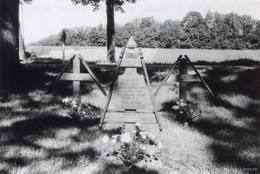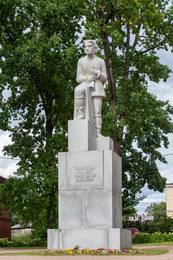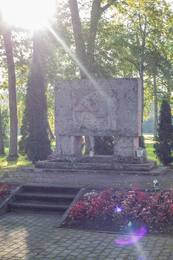О главном лейтенанте "Национал-патриот" Вили Гелби
The fate of Senior Lieutenant Viļa Gelbe (1890-1919) reflects the difficult situation in the formation of our country and army, as well as in the evaluation of these events.
With the proclamation of the Latvian state on November 18, 1918, the War of Independence and the work of forming the armed forces also began. Vilis Gelbe, a naval lieutenant born in Kurzeme, was in the front ranks of Latvian volunteers.
Immediately after the proclamation of the Latvian state, the invasion of the Red Army began and the interim government of Kārlis Ulmanis established a refuge in Liepāja. In February 1919, with the help of the Estonian army, the liberation of Latvia from the north began and the first mobilization took place in the Rūjiena area for the Latvian troops to be formed in Tartu, which became a Northern Latvian brigade under the command of Colonel Jorgis Zemitans. On February 22, 1919, Vilis Gelbs had to assume the duties of the commander of Valmiera district. He was one of those who practically worked in the formation of the Northern Latvian Brigade, which was formed under the auspices of the Estonian Army under an agreement with Estonia.
The Northern Latvian brigade fought not only against the Bolsheviks, but also against the Landeswehr and the Iron Division in the battles of Cēsis. The soldiers of Northern Latvia mobilized around Rūjiena also fought in the subsequent battles of the War of Independence.
The last order of Valmiera District Commander-in-Chief Lieutenant V.Gelbe was issued on May 6, 1919. It is not known what the real reasons were for his resignation, which led him to resign. No complaints or reprimands about his activities were found in the record keeping documents from the local residents, his subordinate service members or the Latvian leadership. It is even incredibly difficult in such difficult circumstances in which he had to work and be the “monster” that in the name of the noble idea of Latvia's independence and freedom was forced to deprive peasant families of almost the last breadwinner, the last piece of horse and bread. However, with his energetic actions, empathetic understanding and tact, he gained the respect and gratitude of the people of Northern Latvia and later of the entire Latvian people instead of eventual hatred and general contempt. Probably the reason was V.Gelbe's report of March 27 - a protest about the robbery of Estonian soldiers and officers in the farms of Latvian farmers. It was a bold, even daring and risky move.
As the territory of Northern Latvia continued to be liberated, it became possible to perform a similar service closer to Limbaži and Ķirbiži, where V.Gelbe's family lived. The last stage of Viļa Gelbe's activity took place as the commander of Limbaži city and district (appointed by the order of Jānis Miglavs on June 2, 1919), which he had to perform mainly during the battle of Cēsis, in one of the most important military units. I had to start all over again. The first major mobilizations in Limbaži take place on the 5th, 6th, 7th. in June. Lieutenant Gelbe also had to take care of the situation in the area up to the Gauja, where hostile forces were concentrated.
On June 10, a ceasefire is concluded in Cēsis, which was to last until June 20. The two warring parties used this time to replenish their forces.
In his June 16 report on Senior Lieutenant Gelbi, J. Ozolina writes: “... who is currently very busy organizing a new commander's district in Vidriži. Mobilizations of people and horses have been announced in the new Vidriži district on June 18, 19 and 20, in which (...) I must also participate ”.
The ceasefire was not over, but everything indicated that fighting would begin soon. V.Gelbe, like most Latvians and Estonians in Northern Latvia, did not think that these battles would start so soon, and trusted the ceasefire agreement with the Germans, which had been concluded through the Allies.
Fully understanding and aware of the decisive nature of the coming battles, he prepared for them with enormous dedication, sparing neither himself nor others. Every effort was made so that it would be difficult for the limbazers, who were hard to do anything, to believe in the freedom of the Latvian people. And he succeeded.
Without waiting for the end of the ceasefire, on June 19, the German iron division flanking stationed in the vicinity of Inčukalns, led by Captain Blankenburg, is the first to start the march in the direction of Limbaži.
On June 19, in the battle against the troops of the German Iron Division near Vidriži manor, Vilis Gelbe fell. His horribly mutilated body was not found until June 21.
Caught in the crossfire between the attacking parts of the Landeswehr and the allies - the Estonian army - Lieutenant Gelbe and his small group of soldiers did not retreat to the Estonians, but bravely took the first blows, delaying the Germans' further progress to Limbaži for several hours. The 9th Estonian Infantry Regiment managed to prepare for the attack, preventing the city of Limbaži from being captured by German forces, defeating them and successfully pursuing the enemy. In this way, they disrupted the entire German strategic plan. Flankgards was unable to unite with its main forces, and these battles of Limbaži - Lielstraupe - Cēsis - Rauna from 19 to 23 June 1919 convincingly ensured a favorable outcome of all the battles of Cēsis.
Taking into account all the investments of V.Gelbe in the establishment of the Northern Latvian Brigade and in the freedom fights in general, he was awarded the Lāčplēsis War Order after his death.
It is interesting that the first initiatives to award the most heroic freedom fighters came directly from V. Gelbe - at that time the commander of Valmiera district in Rūjiena. It was still in April 1919, when in his report to J. Zemitāns he recommended to award the bravest soldiers of Rūjiena with the Order of Imanta III class. "The proposal deserves attention, but it was not possible because there was no such order yet. The name of the Imanta Order reappeared on March 6, 1920, when JALiberts (one of the members of the Commission for the Establishment of the Statute of the War Order) presented the name of the Imanta War Order with the motto “It is better to drown in his blood to perish under another yoke! ””
However, it was the legend of Lāčplēsis, created by previous generations of Latvians, cherished by Pumpurs and Rainis, that at the end of 1919 became a reality of life and the Lāčplēsis War Order was founded during the culmination of the War of Independence - on November 11, 1919.
Back in the spring of 1916, Mitchman Gelbe from Kronstadt had called:
"It's quite a slave chain to carry,
It's a pretty dark wall to smell! ”
But in the summer of 1919, his long-cherished dreams of liberating his homeland from all lords were preparing him to turn from hope into reality. The fulfillment of dreams was so close ....
The Gelbe monument reads:
"See what passes by me,"
ignited in the love of the homeland!
He loves his homeland
I pledged my life. "
Source: Jānis Ulmis, “I LOVE ABOUT THE FATHERLAND ...”. Knight of the Lāčplēsis Military Order, Lieutenant General Vilis Gelbe in the formation of the Armed Forces of Northern Latvia and the Battle of Cesis in the Latvian Liberation War, 2018, Publisher: Limbaži Museum
Saistītās laikalīnijas
Saistītās tēmas
Saistītie objekti
Памятник морскому лейтенанту Л.к.о.к. Вилис Гельб (1890-1919)
Находится на кладбище Limbažu Jūras iela, Jūras iela 56, Limbaži.
Памятник, открытый 10 сентября 1922 года тогдашним президентом Латвии Янисом Чаксте, на котором читается посвящение поэта Виласа Плудониса Вилису Гелбу:
«Соотечественники, проходящие мимо меня, загораются любовью к отечеству,
за любимое отечество я клянусь своей жизнью».
Вилис Гелбе (1890-1919) родился в Курземе, Земитской волости, но он также тесно связан с лимбажской стороной, так как в начале Латвийской войны за независимость вернулся в Латвию из Санкт-Петербурга и присоединился к Северо-Латвийской Бригада.
В мае 1919 г. Лимбажами командовал В. Гелби, он стал военным комендантом района и смог вдохновить местных мужчин, а также совсем молодых ребят на службу в армии.
Деятельность В. Гелбе в то время в Лимбажи и его окрестностях была очень важной, в его обязанности входило не только поддержание порядка в городе и его окрестностях, но и мобилизация, обеспечение продовольствием солдат и лошадей, решение многих других вопросов, которые нельзя отнести в приказах и инструкциях. Организованная им комендантская команда действовала как скоординированный механизм для оказания наиболее эффективной помощи Северо-Латвийской бригаде. Команда командующего шла на помощь регулярной армии в особых случаях, а он подавал пример новым солдатам. В. Гелбе был первым офицером латышской армии, предложившим наградить своих подчиненных орденом Иманты III степени. Заказа еще не было. Имя Иманты появилось в открытом доступе только 20 марта 1920 года, когда министру обороны Карлу Ульману был представлен план создания военного порядка. Однако для ордена было выбрано имя Лачплеш.
Вилис Гелбе погиб во время боев под Цесисом - 19 июня 1919 года, во время разведки. Позже Гельб был награжден Военным орденом Лачплеша, однако историки считают, что его вклад до сих пор не был оценен должным образом. В основном это объясняется членством Гельбе в Северолатышской бригаде.
Так называемая Южнолатышская бригада, которой первоначально командовал Оскарс Каплак, позже Янис Балож, конкурировала с Северолатышской бригадой, которой командовал Йоргс Земитанс.
Памятник воинам, погибшим в Освободительной войне Латвии
Памятник находится рядом с Limbaži Sv. Лютеранская церковь св. Иоанна, ул. Либешу 2. Здесь находится памятник павшим воинам Лимбажи и окрестностей и генерал-лейтенанту Вилису Гелбе (1890-1919), павшему в бою с немцами 19 июня 1919 г. в Видрижи.
Памятник генерал-лейтенанту Вилису Гелбе можно увидеть на Лимбажском кладбище на улице Юрас.
В Видрижи установлен памятный знак на месте падения ЛКОК Вилиса Гелбе и двух солдат его команды
В Видрижи, на повороте на Ледургу, во время Освободительной борьбы 19 июня 1919 года в бою пали обер-лейтенант морской пехоты Вилис Гелбе и двое солдат.
Вилис Гельбе похоронен на Лимбажском кладбище. За героический подвиг в поместье Видрижу Вилису Гелбе был присвоен Лачплешский военный орден III степени (№ 895).
В настоящее время на месте боя можно увидеть три памятных креста, установленных в 1989 году.
22 июня 1934 года возле клена, растущего в усадебном парке, была открыта бронзовая памятная доска работы художника Штефана Берца. Уже в начале коммунистической оккупации, осенью 1940 года, мемориальная доска исчезла. Клен, к которому он был прибит, тоже погиб. В начале Возрождения, 19 июня 1989 г., в 70-ю годовщину гибели Гельбе и двух бойцов его отряда – ефрейтора Крустиньша и солдата Крузы – на перекрестке дорог, где раньше была мемориальная доска, по инициативе Лимбажское отделение Клуба защиты окружающей среды и Народного фронта Латвии установили три деревянных креста, выполненных в народном стиле Янисом Эглишем. Решением исполкома Лимбажского района в апреле 1991 года это памятное место было включено в список исторических памятников местного значения.
Памятник, посвященный освобождению Руиены и павшим солдатам Северолатвийской бригады «Талавский трубач».
Расположен на центральной площади Руиена.
Трехметровое изображение древнего латышского стража, высеченное в сером финском граните, называемое «Талавский трубач», размещено на трехметровом гранитном постаменте, а общая высота памятника достигает 7,5 метров. В первоначальных эскизах и моделях К. Земдега держал в руках меч, который впоследствии был заменен трубой. Памятник был открыт 15 августа 1937 года.
Этот памятник отражает сложную ситуацию в становлении нашей страны и армии, а также в оценке этих событий. Сразу после провозглашения Латвийского государства Красная Армия вторглась, и временное правительство Карлиса Улманиса создало убежище в Лиепае. В феврале 1919 года с помощью эстонской армии началось освобождение Латвии с севера и в районе Руиена прошла первая мобилизация для сформированных в Тарту латышских войск, которые стали Северолатышской бригадой под командованием полковника Йоргиса. Земитаны. Северолатышская бригада сражалась не только против большевиков, но и против ландесвера и Железной дивизии в боях под Цесисом. Солдаты Северной Латвии, мобилизованные в районе Руиены, также участвовали в последующих сражениях Освободительной войны. После войны главные лавры достались генералу Янису Балодису и командовавшей им Южнолатышской бригаде, а о Северолатышской бригаде он часто забывал. Памятник Руиене, который планировался в Руйиене, строился давно, а памятник, открытый в 1937 году, был официально популяризирован как памятник освобождению Руиены и памяти павших воинов, не говоря уже о начале все полки в Северной Латвии.
Памятник является не только популярной достопримечательностью для латвийских и эстонских туристов, что в какой-то степени является отправной точкой для посещения ряда других памятных мест Освободительной войны в Руиене, но и «Tālavas taurētājs» также является местом остановки для эстонских и эстонских Латвийские чиновники разного уровня.
Памятник освободителям и павшим воинам Руиены, более известный как «труба Талавы», 29 октября 1998 г. был включен в список памятников культуры, охраняемых государством, как памятник искусства национального значения (регистрация охраны памятника номер 4522).
Памятник освободителям Северной Латвии
Находится в центре Плацы у шоссе Инчукалнс - Валка (A3). Рядом автобусная остановка и Народный дом Страупе.
Можно увидеть памятник, созданный Теодорсом Залькалнсом освободителям Северной Латвии в 1919 году в Цесисской битве.
На трехступенчатом основании установлены две известняковые опоры, на которые опирается известняковый блок. Перед ним в нижней части изображен конь, запряженный в плуг и плуг с поводьями в правой руке и мечом в левой. Текст, выгравированный на обратной стороне памятника, завершается строками поэта Эдуарда Вирзы:
ДЛЯ ВЫПУСКОВ СЕВЕРНОЙ ЛАТВИИ
ПОКА ЗЕРНОВЫЕ ПОСЕВАЮТСЯ НА ЭТИХ ПОЛЯХ
ВЫ БУДЕТЕ ПРОСЛАВЛЕНЫ И ПОЧИТАЕМСЯ
Памятник был открыт 8 ноября 1931 года. В церемонии открытия принял участие президент Альбертс Квиесис.




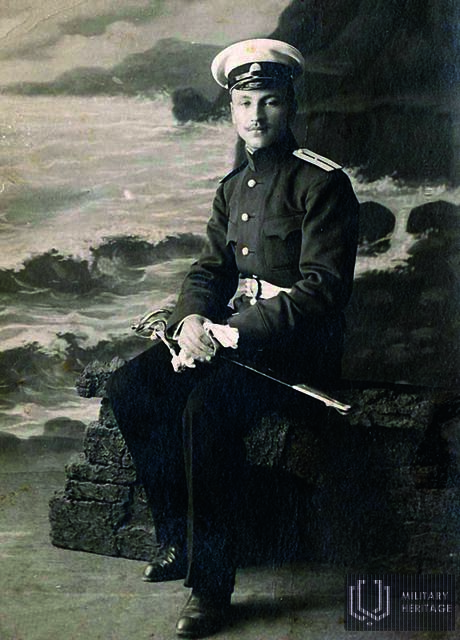
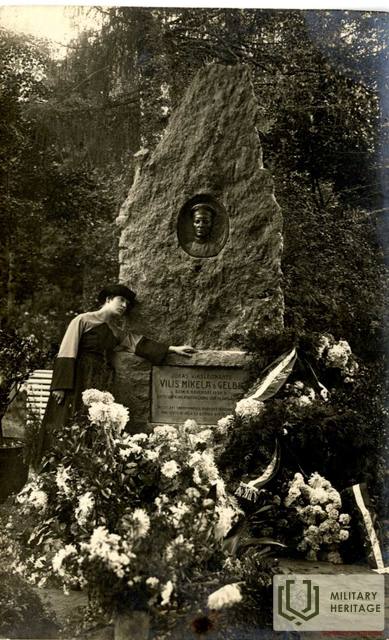
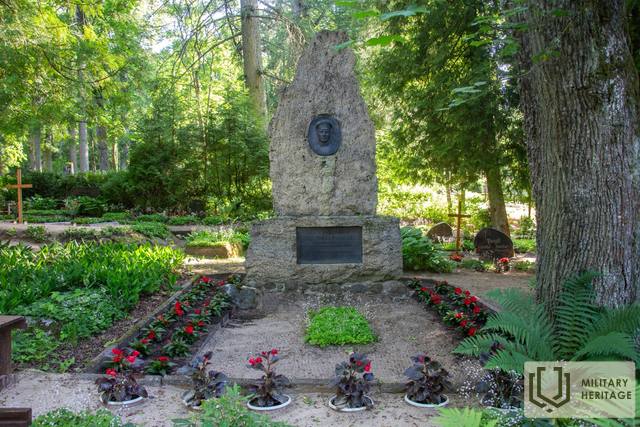
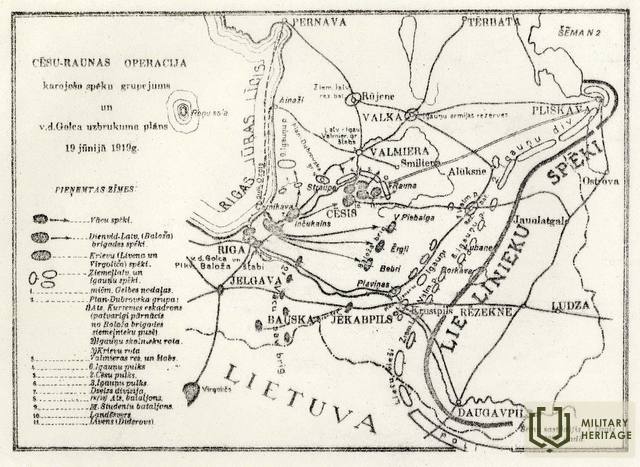
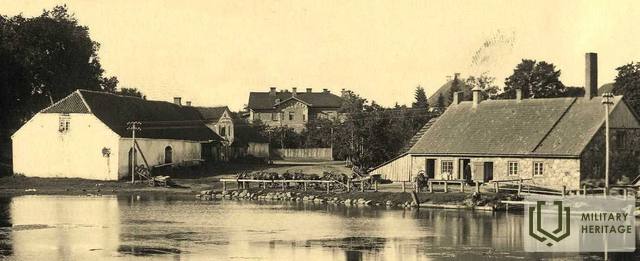
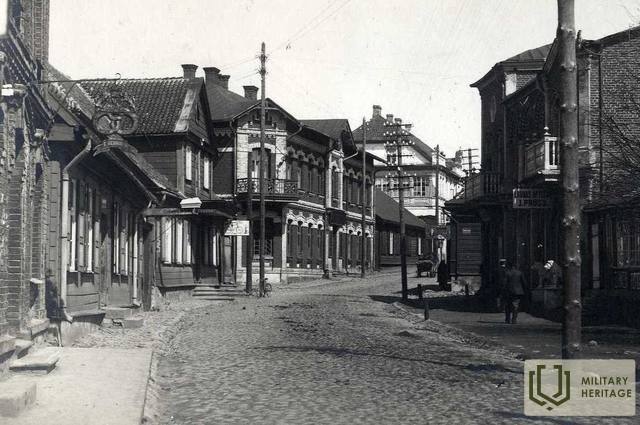
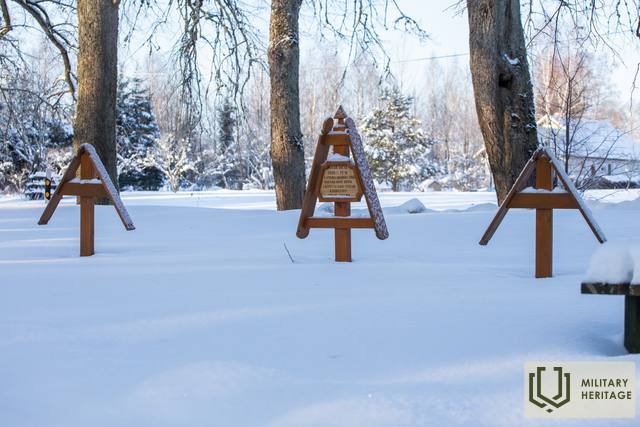

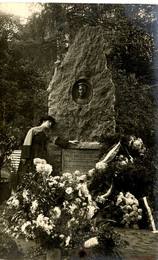
![Limbaži. Valsts prezidents J. Čakste atklāj pieminekli Limbažos I Pasaules karā kritušajiem. Latvijas Brīvības cīņu pieminekļa atklāšana [1923]. Avots: Latvijas Nacionālās bibliotēkas digitālais krājums "Zudusī Latvija".](/g/Poi/00403/44213.png?size=260)
